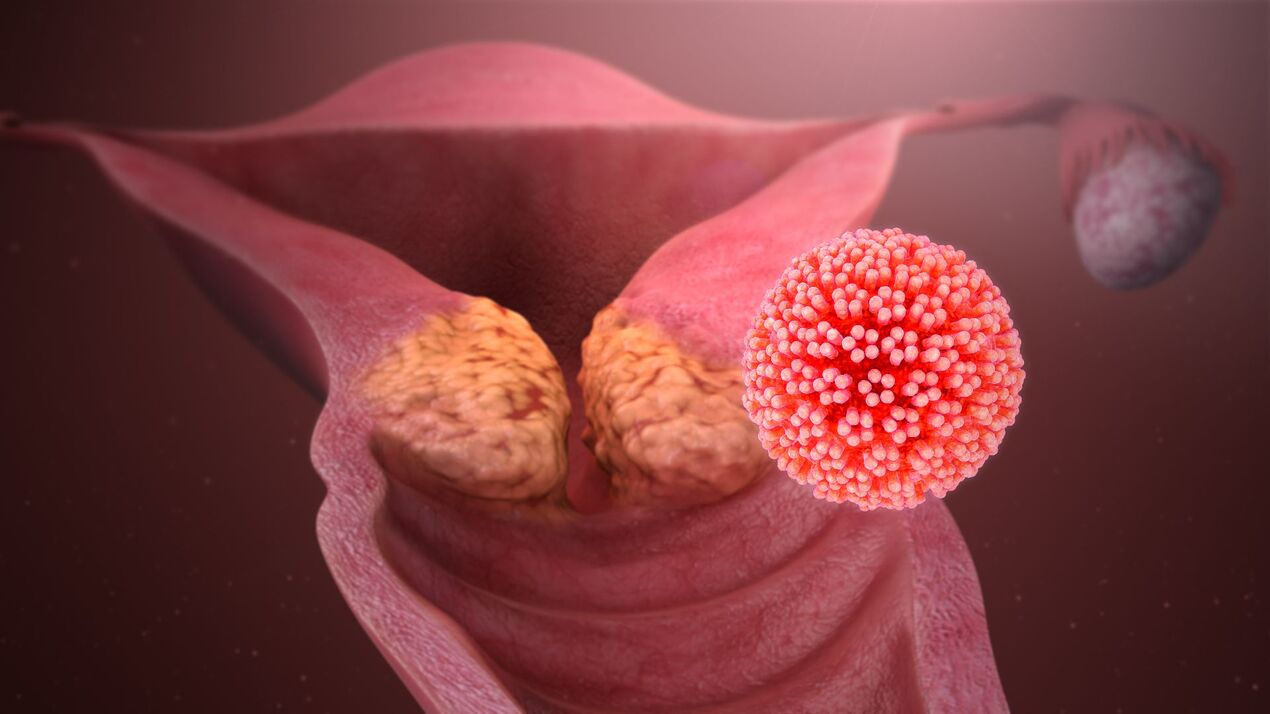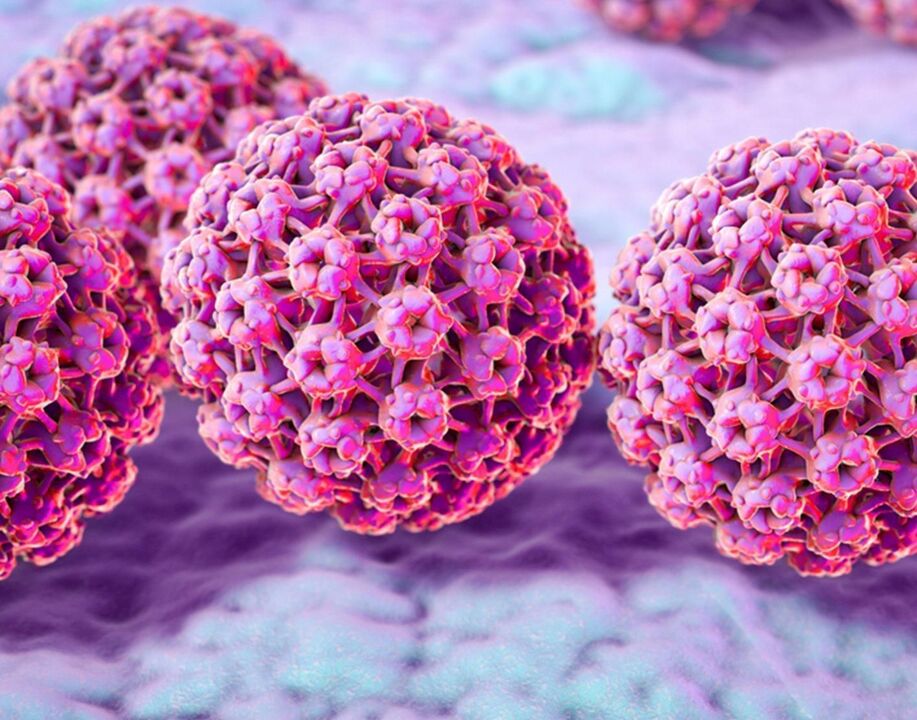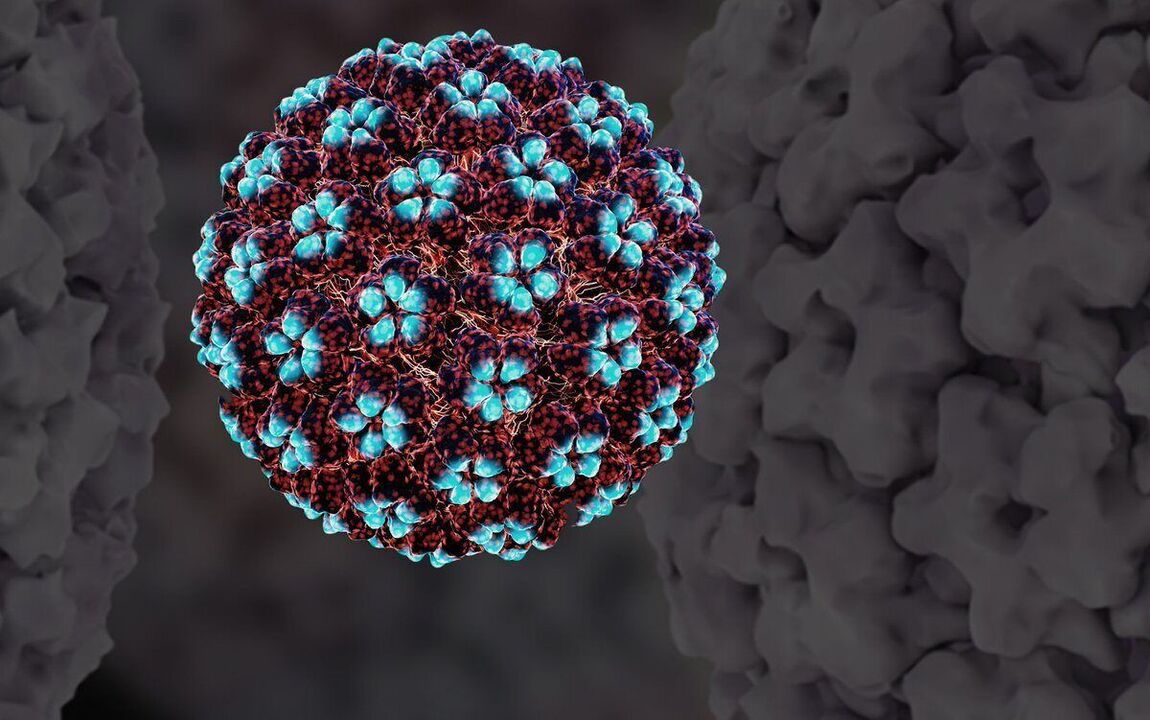Human papillomavirus (HPV) is a very common sexually transmitted infection in the world.
The peculiarity of this infection is that it could not manifest itself for many years, but eventually led to the development of benign (papilloma) or malignant (cervical cancer) diseases of the genitals.

Types of human papillomavirus
More than 100 types of HPV are known. Species are peculiar "subspecies" of viruses that differ from each other. Species are identified by the numbers assigned to them when they were found.
The high carcinogenic risk group consists of 14 types: 16, 18, 31, 33, 35, 39, 45, 51, 52, 56, 58, 59, 66, 68 (these types are related to the development of cervical cancer).
In addition, types of low carcinogenic risk are known (mainly 6 and 11). They lead to the formation of angenital warts (genital warts, papillomas). Papillomas are located on the mucous membranes of the vulva, vagina, in the perianal region, on the skin of the genitals. They almost never become malignant, but lead to significant genital mutilation. Warts on other parts of the body (hands, feet, face) can also be caused by these types of viruses or can have other origins. In later articles we will discuss the types of HPV "high risk" and "low risk" in particular.
Papillomavirus infection in humans
The virus is mainly transmitted through sexual contact. Almost all women become infected with HPV sooner or later: up to 90% of sexually active women will experience this infection throughout their lives.
But there is good news: The majority of those infected (about 90%) will get rid of HPV without any medical help within two years.
This is a normal process of HPV infection in the human body. This time is enough for the human immune system to get rid of the virus completely. In such a situation, HPV will not harm the body.That is to say, if HPV was diagnosed some time ago, and now it is not, then this is completely normal!
It must be borne in mind that the immune system works in different people at "different rates". In this context, the rate of HPV release may vary for sexual partners.

Most people become infected with HPV shortly after they become sexually active and many will never know they have been infected with HPV. Permanent immunity does not develop after infection and can therefore be re-transmitted both by the same virus that has already been detected and by other types of the virus.
"High risk" HPV is dangerous because it can lead to the development of cervical cancer and some other types of cancer. "High risk" HPV does not cause other problems.
HPV does not lead to inflammation of the vagina / cervical mucosa, menstrual irregularities or infertility.
HPV does not affect the ability to conceive and become pregnant.
A "high-risk" HPV baby is not infected during pregnancy and birth.
Diagnosis of human papillomavirus
It is almost pointless to get an HPV test for high cancer risk before the age of 25 (except for women who start having sex early (before the age of 18)), as during this time it is very likely to detect a virus that will soon leave the body alone.
After 25 - 30 years, it makes sense to make a diagnosis:
- together with cell analysis (PAP test). If there are changes in the PAP test and HPV "high risk", then this condition requires special attention;
- Prolonged persistent "high-risk" HPV without cell modification is also noteworthy. Recently, the susceptibility of HPV tests to the prevention of cervical cancer has been shown to be higher than the susceptibility of cytology, and therefore HPV alone (without cytotoxicity) determination is accepted as independent. a study to prevent cervical cancer in the United States. However, in this country, an annual cell test is recommended, so that the combination of these two tests seems normal;
- after treatment of dysplasia / pre-cancer / cervical cancer (lack of HPV in post-treatment diagnosis almost always indicates successful treatment).
For the examination, it is necessary to obtain a stroke from the cervix (the material can be examined from the vagina, but as part of the screening it is recommended to obtain the material from the cervix).
The analysis must give:
- Once a year (if the "risk" of HPV was previously diagnosed and the diagnosis is made together with a cell test);
- 1 time in 5 years if previous diagnosis was negative.
It is almost never necessary to diagnose HPV at low carcinogenic risk. If there are no papillomas, then this diagnosis does not make sense in principle (transmission of the virus is possible, there is no treatment for the virus, so what to do next with the result of the diagnosis is unknown).
If there are papillomas, then:
- most often they are caused by HPV;
- they must be destroyed regardless of whether we find 6/11 species or not;
- if we take a stroke, then directly from the papillomas themselves, but not from the vagina / cervix.
There are tests to detect different types of HPV. If you take regular HPV tests, check what specific types are included in the diagnosis. Some laboratories do research only on models 16 and 18, others - on all models together. It is also possible to take a test that will identify all 14 types of "high risk" viruses in quantitative format. Quantitative features are important in predicting the risk of pre-cancerous and cervical cancer. These tests should be used in conjunction with the prevention of cervical cancer and not as an independent test. Diagnosis for HPV without cytological results (PAP test) usually does not allow to draw any conclusions about the patient's health.
There is no such diagnosis that will determine whether or not the virus in a particular patient will "go away".

Treatment of human papillomavirus
There is no medical treatment for HPV. There are treatments for HPV (papilloma, dysplasia, pre-cancer, cervical cancer).
This treatment should be performed with surgery (cryocoagulation, laser, radiation knife).
No "immunostimulants" are associated with the treatment of HPV and should not be used. None of the drugs that are commonly known in our country have passed adequate tests that would show their efficacy and safety. There are no protocols / standards / recommendations contained in these drugs.
The presence or absence of "rupture" in the cervix does not affect the technology of HPV treatment. You can read more about the situations when it is necessary to treat rupture in the article "Rupture or no rupture? ".
If the patient has no complaints and no papilloma / changes in the cervix during colonoscopy and according to the PAP test, no medical surgery is required.
It is only necessary to repeat the diagnosis once a year and monitor the condition of the cervix (annual PAP test, colonoscopy). In most patients, the virus will "leave" the body on its own. If it does not disappear, it is not at all necessary that it leads to the development of cervical cancer, but monitoring is necessary.
Treatment of sexual partners is not necessary (except in cases where both parties have a genital tumor).
Prevention of human papillomavirus infection
Vaccines have been developed to protect against HPV types 16 and 18 (one of the vaccines also protects against types 6 and 11). HPV types 16 and 18 are responsible for 70% of cervical cancer cases and that is why protection against them is so important. Standard vaccination is used in 45 countries around the world.
Condom (does not provide 100% protection).
The only method that provides 100% protection is abstinence from sexual intercourse. I'm in no way fighting for him, I'm just giving food for thought.















































































